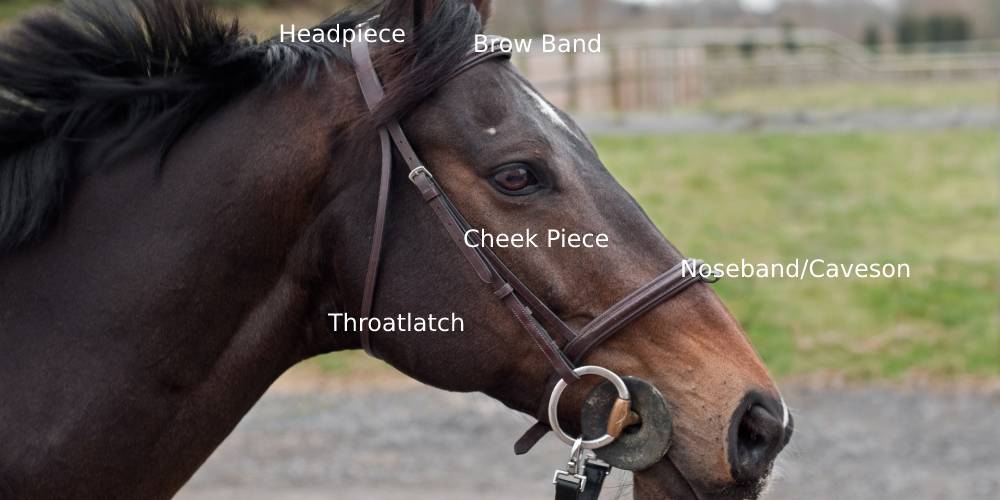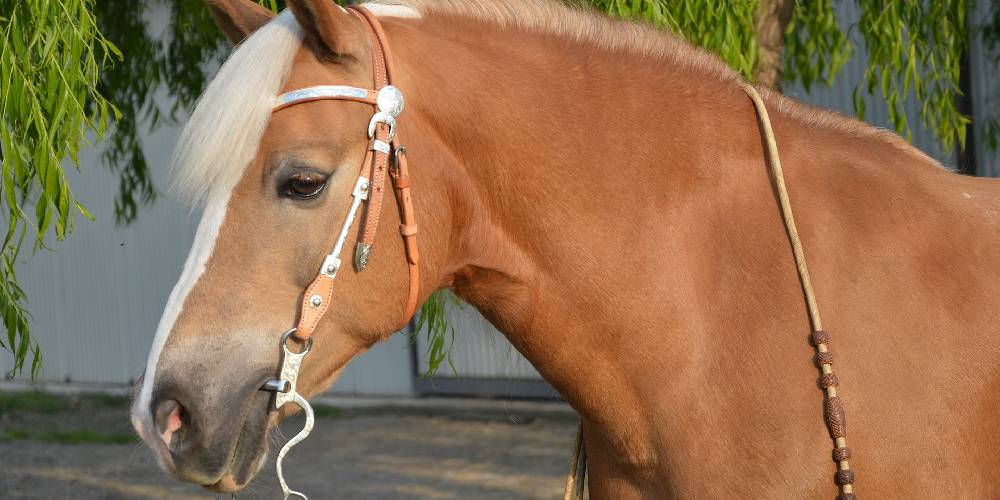Bridles are important pieces of tack used by nearly all horsemen on their mounts, but what are bridles anyway? Do horses actually need them? What are they typically made of? And how long have they been around?
What Are Bridles?
A bridle is a piece of riding equipment that is often paired with a bit and reins to help the rider control and direct the horse they’re riding or handling. The main purpose of a bridle is to help keep the bit inside the horse’s mouth. Without the use of a bridle, a horse may let the bit fall from their mouth, the bit won’t be tight enough in their mouth and it isn’t effective, the bit can slide right through each side of the horse’s mouth, as well as force the rider to use harder hands. With no bridle, a rider must ride with more force so the bit in the horse’s mouth doesn’t come out. A bridle lets the rider use softer hands and lets them loosen their reins as well. Bridles can come in any shape, size, and color. They are often seen made of leather, faux leather, nylon, and rawhide.
Do Horses Actually Need To Use Bridles?
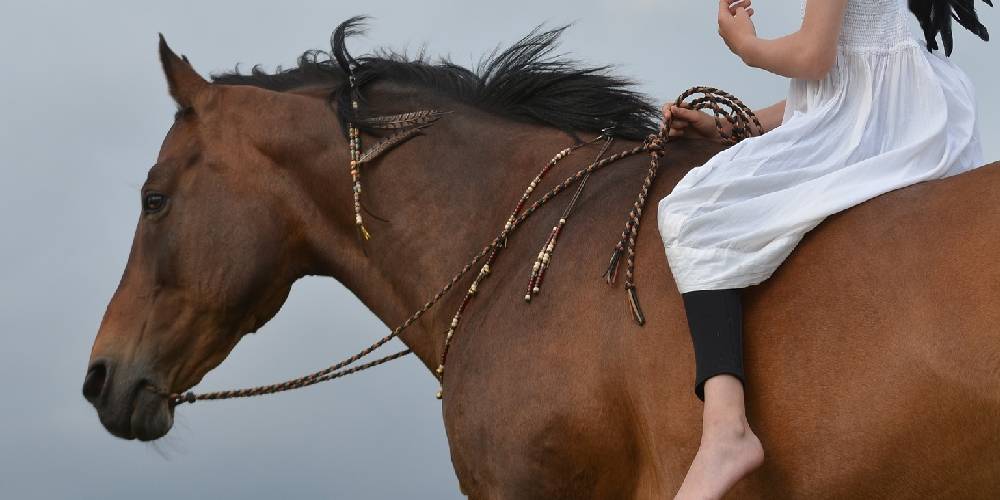
No, a bridle is not required to ride a horse. Some horses are specially trained to be ridden by the use of a neck rope and turned using a technique called neck reining. Horses trained to use neck reining don’t usually need a bit or bridle to be ridden because their training only requires a rope at the neck to guide them in the correct direction.
Native Americans who used horses only used something called a war bridle. A war bridle isn’t a bridle at all, it is basically a bit and reins that are tied together under the chin to help keep the bit in the horse’s mouth.
Types Of Materials That Bridles Are Made From
Leather
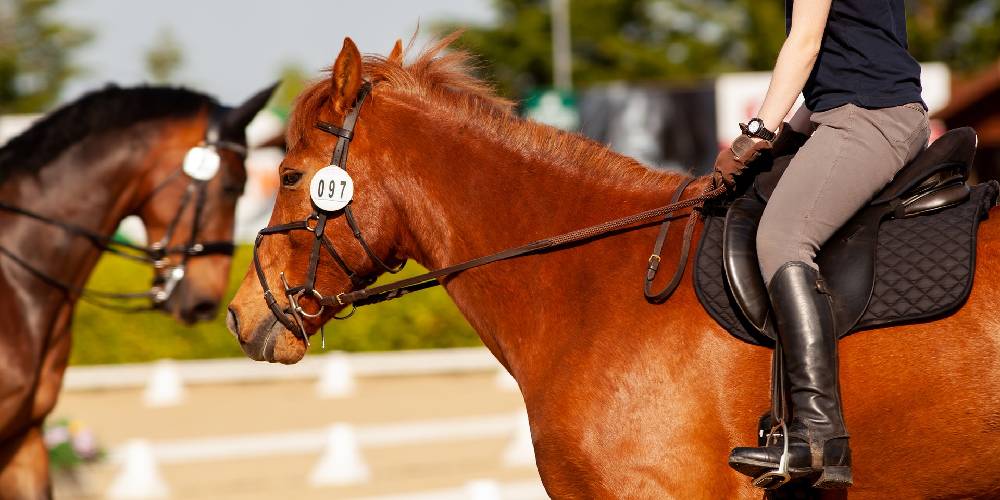
Leather is the most common material to see bridles made out of. Most high-quality bridles are made of leather and this material is seen being used for bridles of all shapes and sizes. The reason that this material is ideal for bridles is because of its flexibility, durability, softness, and availability.
Leather bridles, if used, cleaned, and conditioned properly, stay soft, supple, and flexible throughout the whole time they are being used. Leather bridles will break, crack, or get stiff if they aren’t taken care of which is one of the only things that many people don’t like about these bridles.
Leather bridles are found in both English and Western riding and make up well over half of the bridles being used today. Bridles of this material are known to break if a horse panics. This is one of the nicer things about leather bridles. My horse Bronze once got his reins snagged on a fence so when he freaked out, he pulled his head back breaking the bridle. Had he not been wearing a leather bridle and I had used nylon instead, he could have injured himself as the bridle would not have broken.
Faux Leather
Faux leather bridles are possibly one of the next most popular types of bridles out there. Faux leather is similar to real leather bridles in the sense that they can break, become stiff, or need conditioning.
Faux leather bridles are usually cheaper than true leather bridles because the materials are cheaper and synthetic than paying for true leather.
Depending on the type of faux leather, the bridle can break just as easily as real leather in the situation where a horse panics.
Nylon
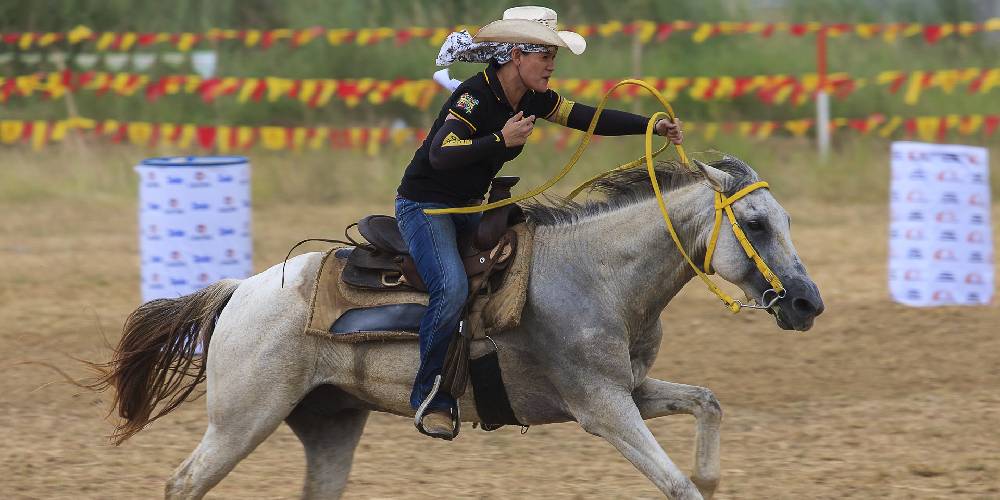
Nylon is one of the cheapest materials that a bridle can be found in. Nylon bridles often come in bright fun colors and are usually used outside the show ring.
Nylon bridles are one of the easiest and lowest maintenance pieces of tack that you could ever buy. Because they are made of a woven material and are actually pretty thin, nylon is easy to keep clean so cleaning of these bridles is minimal.
Nylon is significantly stronger than leather in these purposes. If a horse panics when wearing a nylon bridle and the horse steps on their rein or gets the rein snagged they usually won’t break. Nylon is a strong material and the fact that it won’t break make many horse owners nervous.
Rawhide
There really aren’t many rawhide bridles being used, but the bridles decorated in rawhide are a lot more common to see than full rawhide bridles.
Rawhide is usually white in color and is used to decorate western bridles. Some types of hackamores including the bozal are made mostly out of rawhide, so the horse will often use a rawhide-laden part on their bridle.
History Of The Bridle
Bridles have been used since the first domestication of the horse. They were used so they could have some sort of extra head support rather than allowing a horse to escape and/or potentially cause problems for their handles with just a bit in their mouth.
Bridles are used for carriage and buggy horses along with blinders for the horses to minimalize distractions they may face.
In the Middle Ages, bridles were seen and used all the time. Even during World War One, horses in the cavalry or horses ridden by the leading military figures almost always were on a horse leading their people to victory.
The first bridles, as I mentioned, were similar to the war bridle where there is only a mouth piece and reins. These bridles soon got more and more complicated as time went on, and now today there are more bridle types for all horses in different shapes and sizes.
Types Of Bridles
There is an incredible amount of bridles used for different horses in different disciplines. Western riding prefers a bridle which is labeled as minimally invasive and lacks a nose-band, brown band, or throat latch, while in English riding, some horses have a bridle so complicated that is has figure-8 nose band or that is has a place for two bits. The variety of bridles is incredible.
The different types of bridles include:
English Bridle
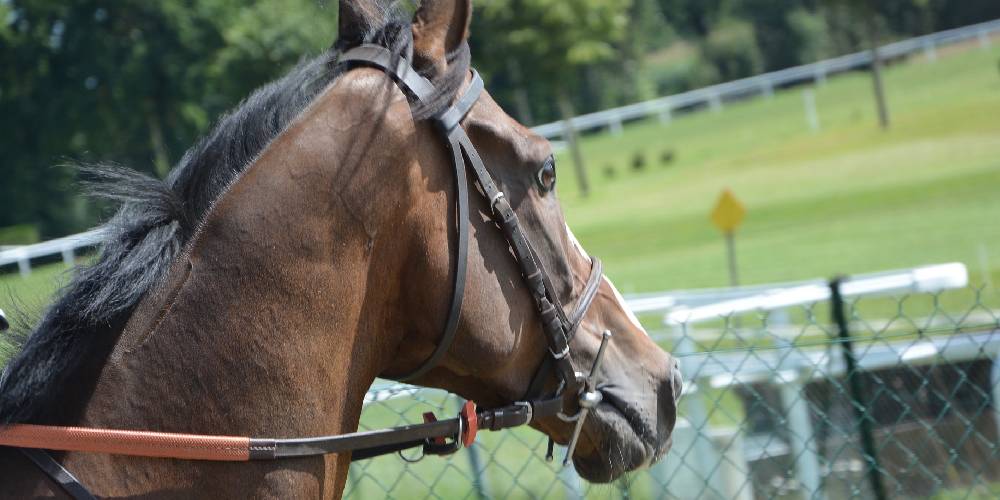
English bridles are different from other bridles, such as the western bridle, as it doesn’t typically have a curb chain, the brow band is often left out, the throat latch is sometimes not present, and the bridle only consists of reins, a bit and a leather strap that passes right behind the horse’s ear.
In English riding, there is usually a headstall or bridle consisting of a typical leather strap, but also includes a brow band, nose band, and throat latch strap.
English bridles can have a flat and straight nose band or a figure-8 nose band that crosses. The overall shape and appearance of the English bridle rarely changes other than in the variations of nose bands.
Western Bridle
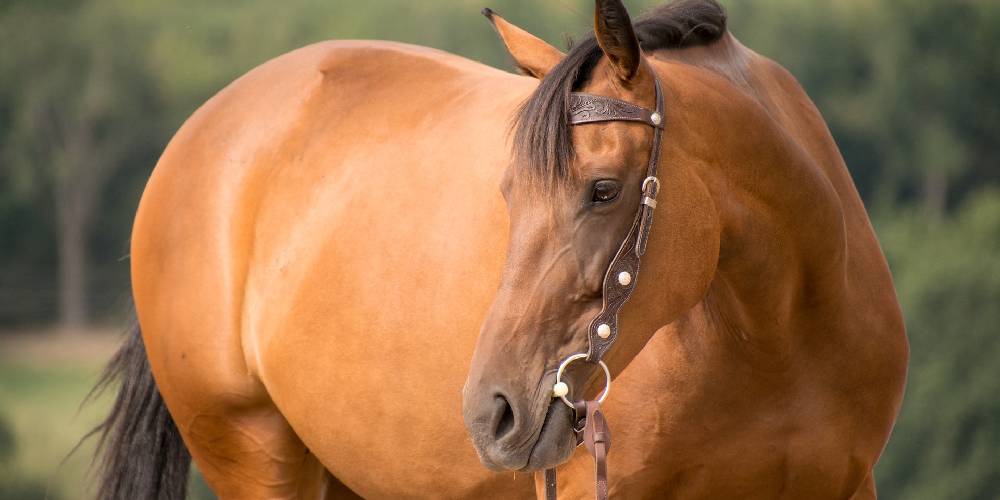
Western bridles are very simple pieces of tack that are just mad up of a leather strap that is attached to the bit. Sometimes, western bridles have a type of decoration or engraving on them. Examples of this would be silver studs, leather tooling, or another unique decorative things that are added to the western bridle.
Flat Saddle Bridle
The flat saddle bridle, like the typical English saddle, has a brow band, throat latch straps, and a nose band, but the bridle has loops or buckles to fit two bits on one bridle. Saddle seat horses usually have two bits in their mouth at once, one to control the horse and the other to keep the horse’s head up and tucked in.
Parts Of The Bridle
